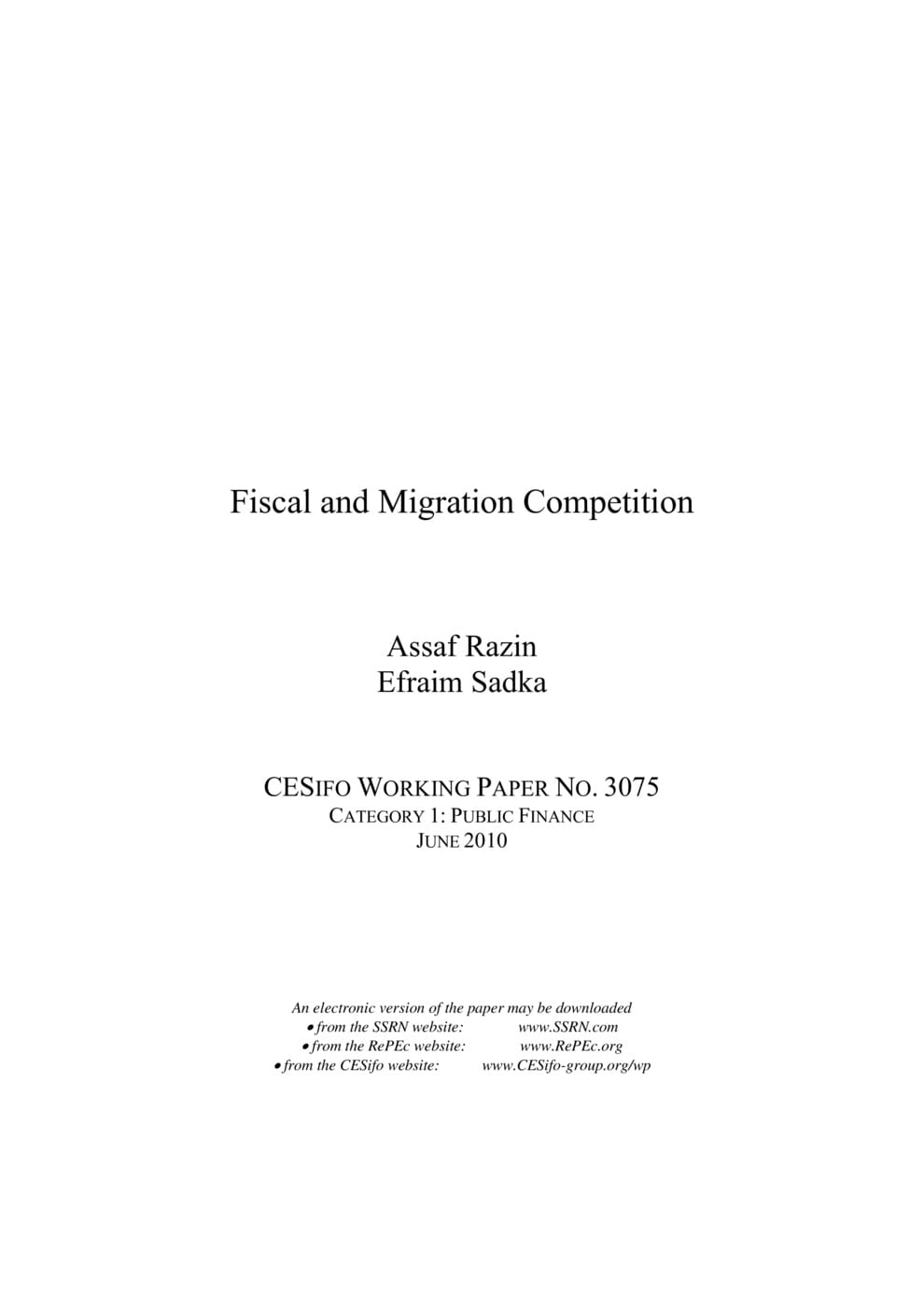Fiscal and Migration Competition
CESifo, Munich, 2010
CESifo Working Paper No. 3075

It is often argued that tax competition may lead to a ‘race to the bottom’. This result may indeed hold in the case of factor mobility (such as capital). However, in this paper we emphasize the unique feature of labor migration, that may nullify the’race to the bottom’ hypothesis. Labor migration is governed not only by net-of-tax factor rewards, but rather importantly also by the benefits that the welfare state provides. The paper analyzes fiscal competition with and without migration in a two-country, political-economy, model with labor of different skills. The paper assigns an active fiscal role for both the host and the source countries. It models the host country stylistically as a core EU welfare state, with tax financed benefits and migration policies, and the migration source country as an accession country (following the EU enlargement to 27 states), with its own welfare (tax-benefit) policy. We let these two asymmetric countries (in terms of their productivity) engage in fiscal competition. Using numerical simulations we examine how the migration and tax policies are shaped, and how they are affected by whether the skilled or the unskilled are in power. As the driving force behind migration is a productivity gap, we also analyze the implications of the productivity gap for the design of migration and tax policies.
Public Finance